An investigation into what dental hygienists and dental therapists would discover if they attempted to stop consuming added-sugar for 28 days.
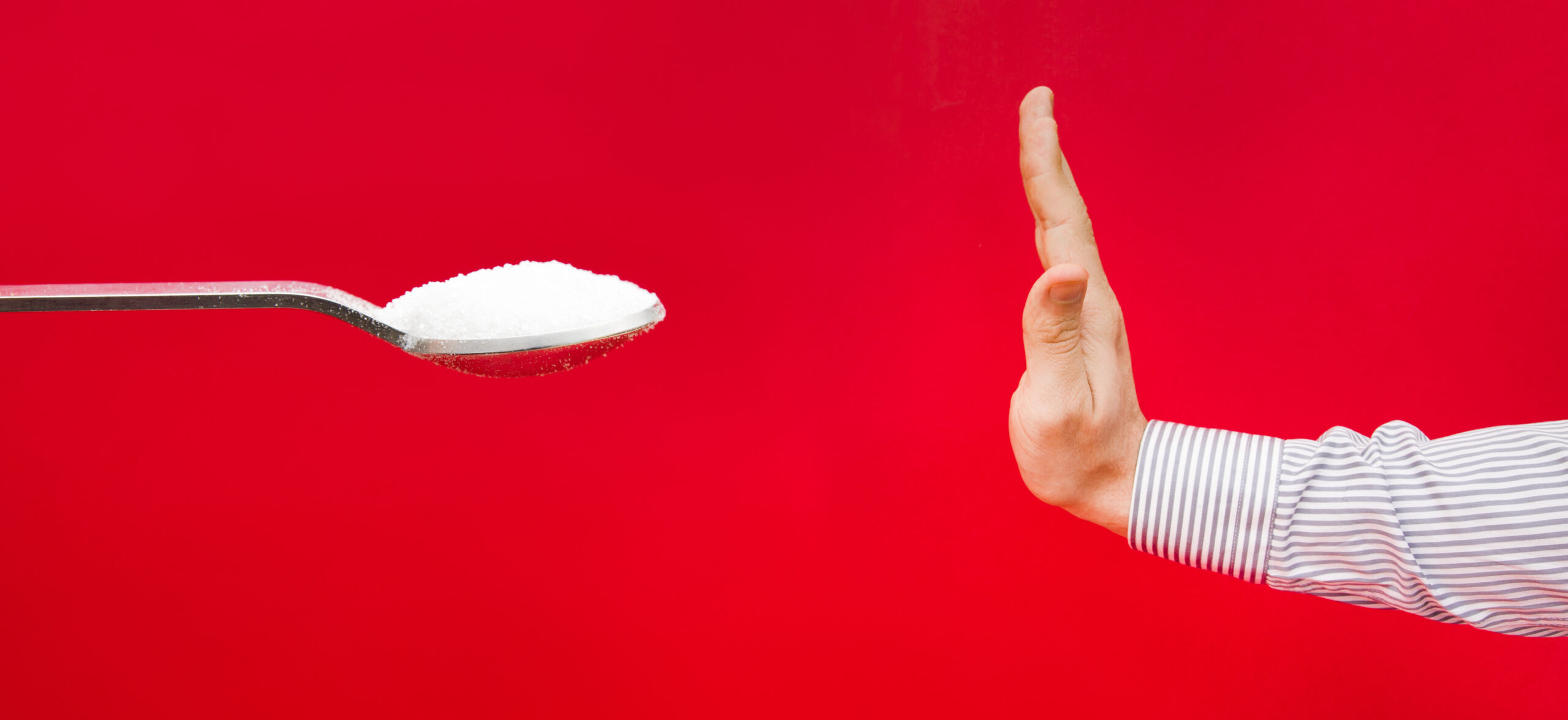
Peer reviewed and originally published in the Annual Clinical Journal of Dental Health 2021
Timothy Ives MA Med Ed, BSc (Hons), Dip Dent Hyg, FHEA.
ABSTRACT
Aims
To observe what an international group of dental hygienists and dental therapists would discover if they attempted to stop consuming added-sugar for 28 days.
Method
This action research project is presented as a qualitative case study involving a group of 41 dental hygienists and dental therapists from the UK, USA, Canada, Switzerland and Czech Republic. Following a 28-day no-added-sugar-challenge, participants answered questions via email
or video recordings and then took part in four semi-structured group online interviews which were recorded and transcribed.
Results
Seventeen (n=41; 41%) participants completed the 28-day challenge giving positive feedback, commitment, support, planning and adopting strategies as key reasons for ‘success’. Twenty-four (n=41; 59%) participants failed to complete the 28 days giving: addiction; temptation; stress; boredom; planning; expense and hidden sugar as reasons for ‘failure’. However, all participants generated new knowledge relating to both success and failure.
Conclusion
Guiding a patient to stop consuming added-sugar is a highly complex task and should be approached like any other addiction. Clinicians should attempt this challenge as the new knowledge gained from this experience will benefit their approach to health behaviour change.
KEY WORDS
Action research, sugar, added-sugar, dental hygienist, dental therapist, behaviour change.

Introduction
Sugar, although widely enjoyed by dental professionals, tends to feature in discussions with patients as something to be avoided. This contradictory behaviour may be one of the reasons that the dental profession is so unsuccessful in persuading patients to stop consuming so much sugar.
Dental hygienists and dental therapists are skilled in psychology and behavioural change, since much of their practice involves persuading patients to adopt different behaviours.1 Requesting this group of professionals to attempt what they are asking their patients to achieve, would provide an opportunity for them to create their own new knowledge base.
Sugar consumption plays a significant role in oral and systemic disease. Numerous systematic reviews have all agreed that there is a positive association between sugar consumption and dental caries.2 There is increasing evidence for the role of added sugars in periodontal disease, independent of traditional risk factors.3 When Cochrane systematically examined dietary interventions taking place within a dental environment they confirmed that the advice was being given but the evidence that sugar consumption in patients was reducing was weak.4 In 2018/2019 in England alone, over 59 thousand children were admitted to hospital to have carious teeth removed under general anaesthesia. More than 13 thousand of these children were aged 0-5 years.5
In 2018/2019 there were 3.9 million people diagnosed with diabetes in the UK and the projected figure for 2025, if the current trend continues, is 5 million people.6 This equates to nearly 8% of the population. There is now good evidence for the bi-directional relationship between periodontal disease and diabetes.7
Obesity is a major public health problem and is associated with premature death, diabetes, cardiovascular disease and some cancers.8 In 2018, 28% of the adult UK population was obese and 20% of children aged between 10-11 years were obese. This has increased by 3% since 2006/07.9 In order to reduce childhood obesity (and hopefully tooth decay rates) the UK government introduced a sugar tax from 6th April 2018.10 Companies have to pay £0.24 if a drink contains 8g per 100 mls or £0.18 for 5-8g per 100 mls. As a result, over 50% of manufacturers reformulated their drinks. Two key parts of the 2016 Government Childhood Obesity Plan was to remove 20% of sugar from products by 2020 and for clearer food labelling.11 In the latest government report published in October 2020, the average overall sugar reduction across all food categories stood at 3%, missing their target by 17%. Dr Alison Tedstone, Chief Nutritionist at Public Health England, with regard to this report stated, “Overall progress remains slow. Fast and more robust action is needed to help us consume less sugar, which will help us become healthier and lower the economic burden of obesity and preventable pressure on the NHS.”12
There is also evidence that obesity increases the risk of periodontitis onset and its progression.13
In 1972 Professor John Yudkin, the founding Professor of the Department of Nutrition at Queen Elizabeth College, London, warned that sugar was killing people, specifically through cardiovascular disease (CVD). Despite his warnings, the rate of CVD increased and the government advised a low-fat diet, which led to even higher sugar intake. CVD continues to rise along with obesity and sugar consumption.14,15
The debate continues about the role of fats and carbohydrates
in disease. According to the government, reducing saturated fat lowers cholesterol and CVD.13 In contrast, a 2017 study published in The Lancet described an 18-country study from five continents involving 135,335 people and assessed the association of carbohydrates and fats with CVD and total mortality. The conclusion of the study was: “A high carbohydrate intake was associated with a higher risk of mortality, whereas total fat and individual types of fat were related to lower mortality. Total fat and types of fat were not associated with CVD, myocardial infarction, or CVD disease mortality, whereas saturated fat had an inverse association with stroke. Global dietary guidelines should be reconsidered in light of these findings.”16
In 2018, the British Nutrition Foundation published research indicating 43% of adults could not find reliable nutritional information and 61% blamed ‘experts’ for the confusion.17 Based on historical evidence, the sugar industry itself and government advisory committees may be responsible for some of this confusion. In the 1960s and 1970s the Sugar Research Foundation (SRF) sponsored a research programme that laid the blame for CVD on dietary fats and completely ignored the role of sucrose. Government policy making committees based their health advice on these literature reviews that focused on fats causing heart disease and obesity, not sugar. These studies were published in The New England Journal of Medicine by a team of Harvard University researchers, who were individually paid the equivalent of $50,000 by a top sugar industry executive.18
Aims
To generate new knowledge from the study of an international group of dental hygienists and dental therapists who had been invited to stop consuming added sugar for a period of 28 days.
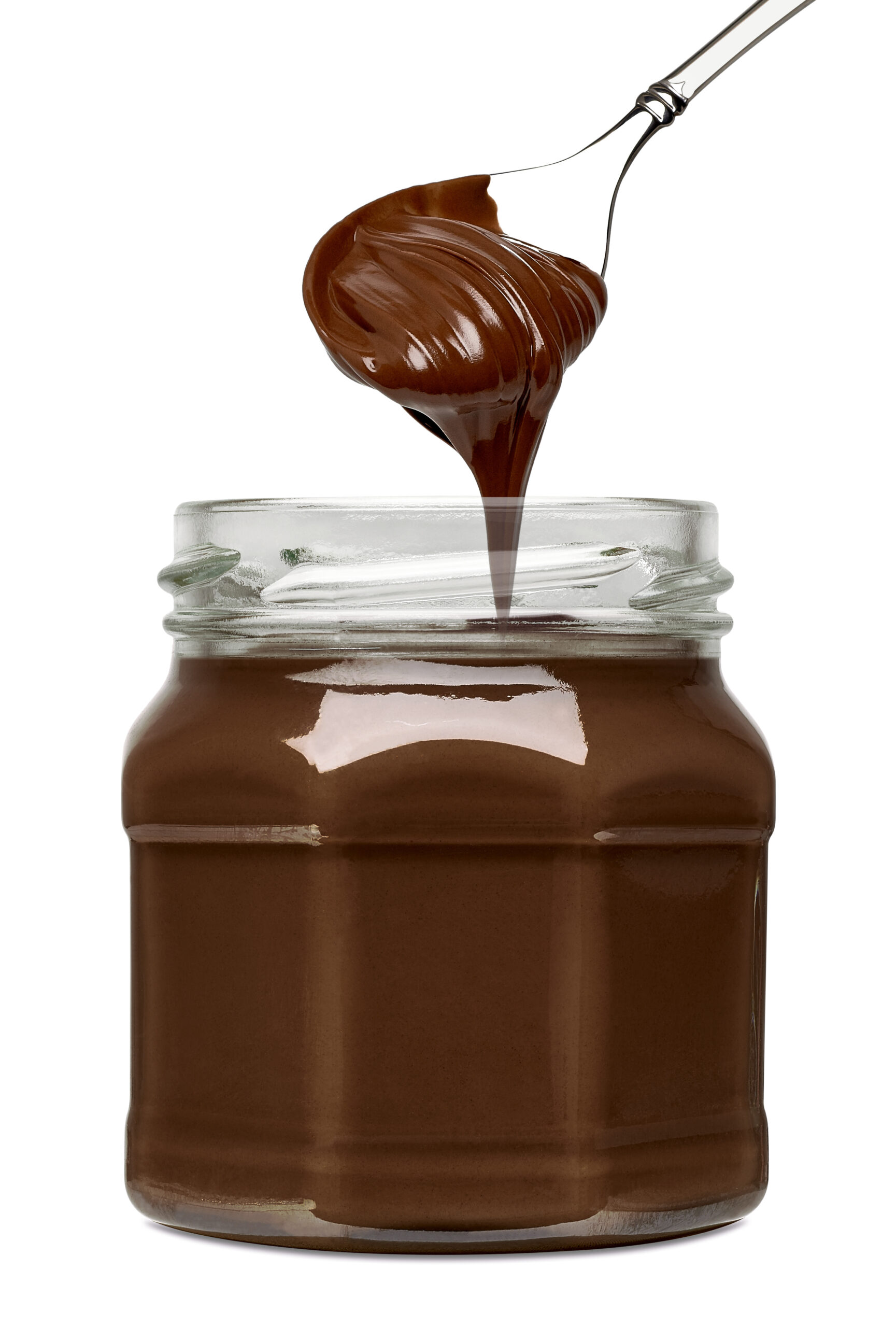
Methods
This action research (AR) study is a form of inquiry that enables clinicians to improve their own practice whilst influencing the learning of others.19 Ethical approval was obtained from O’Hehir University Ethics Committee (31/03/2020/1) and, due to the nature of AR and the requirement to continually change and adapt, the committee requested a continuing dialogue throughout the process, which was maintained. Approval was granted for the September semi-structured group interviews. Informed consent was obtained from research participants and confidentiality and privacy of the research participants was met throughout the process.
Invitations to participate in a 28-day-no-added-sugar-challenge were sent via email to all members of the British Society of Dental Hygiene and Therapy (BSDHT) and posted on international, closed social media discussion groups. For the purpose of this study, added sugar was defined as any of the sugars ending in ‘ose,’ or varieties thereof, that were not naturally present in food or drinks. Inclusion in this part of the research required participants to have a qualification in dental hygiene and/or dental therapy.
Participants were given a three-month window between 1st April and 30th June 2020 to attempt to complete 28 consecutive days without consuming added sugar. Participants were asked to inform of their start and end dates and upon completion, to answer the following questions either via email or sent as a video recording:
1. How many days did you complete?
2. Why do you think you completed this much?
3. What did you learn that you think may benefit your patients?
4. Do you have any additional comments?
After examining the data, several interesting themes were developing, and it was decided to explore this further via four semi-structured online group interviews using Zoom software on an iMac, which was recorded and transcribed. For security, the recordings were stored in a cloud using Dropbox, to which only the researcher had access. The interviews were undertaken during September 2020 and involved 18 clinicians fairly evenly split into four groups. Each interview took approximately one hour and selection criteria was based purely on availability. A semi-structured interview format was used as this format allows for the exploration of the perceptions of the participants within a conversational atmosphere.20 To validate the qualitative data, triangulation was used by asking similar open-ended questions to each group and participants were also ‘cross-pollinated’ with information from previous groups in order to better understand each theme.21 Participants were then invited to view the data and to edit comments that were made.
Results
A total of 46 research participants from five countries – UK, USA, Canada, Australia, Czech Republic and Switzerland - agreed to take part in the challenge. Five participants failed to send in their data. Data were received from 41 participants: UK (25); USA (12); Canada (2); Czech Republic (1); and Switzerland (1). All of the participants were dental hygienists and 10 were dual-qualified dental hygienists and dental therapists.
Seventeen (n=41; 41%) participants completed 28 consecutive days without consuming added sugars. Various reasons were given for ‘success’ that could be grouped into the following:
• Received positive feedback and noticed a positive difference
• Made a commitment to the research organiser
• Various different support mechanisms and groups
• Changed shopping and cooking strategies
• Already eating a low sugar diet
• Planned very carefully
Twenty-four (59%) participants failed to complete the full 28 consecutive days without consuming added-sugar, but the majority considered their own partial achievement a big success. Various reasons were given for ‘failure’ that could be grouped into the following:
• Addicted to sugar
• Children, friends or family of participants tempted them with sugary treats
• Stress or boredom
• Required too much planning
• Too expensive
• Became aware of eating sugar after the event

Analysis and discussion
The themes that developed from the initial results were specific food related discoveries, health related changes, behaviour change and oral health strategies. Groups are numbered 1 to 4 and each participant is identified with a letter.
Theme 1: Specific food related discoveries
All participants believed sugar was addictive and the vast majority considered it to be more closely related to a drug than a food because of nil-health benefits and potential dangers to health. The diseases mentioned were tooth decay, heart disease, cancer, obesity and diabetes. All participants agreed that the dental profession does not take sugar seriously enough. Many commented on the availability of sugar within a dental practice setting.
1d stated: “Our staff-room is full of sugar. Dentists are as bad as nurses as they can’t go a day without a sugar treat. The staff room table is always being replenished with chocolate and it’s part of the routine.”
1c agreed: “I have been eating less sugar since I stopped practising.”
1b added: “I have never worked in a practice where someone went out and brought fruit. We don’t practice what we preach! Even when on a ‘health kick,’ staff come in consuming low-fat products loaded with sugar.”
1b continued: “Sugar indirectly kills more people than smoking with its links to obesity, diabetes, heart disease and cancer.”
1d replied: “But we don’t put sugar in the same category as smoking do we?”
Many of the participants found sugar in ‘foods’ they did not expect. Common examples were: stock cubes, seasonings, curry pastes, pesto and bread. Many participants were surprised at the sugar content of what they had previously considered to be healthy foods.
1a said: “Vegetarian foods are loaded with sugar. I had to make everything myself.”
1d added: “It never occurred to me that sausages and bacon would contain sugar and a gluten-free product has three times more sugar than its gluten counterpart. Many people assume gluten-free is healthier.”
1b replied: “It is unfair that people on vegetarian and gluten-free diets have to suffer without realising.”
Many of the participants had to cook completely from scratch and all had to adapt their cooking and baking habits: 1a made her own condiments and baked cakes containing erythritol and xylitol; 4d baked many cakes containing xylitol; and 1d baked with erythritol and none of her family noticed. Substituting sugar with xylitol and erythritol was generally popular for many participants and many considered this a good way to ‘wean’ someone off sugar.
1a said: “My (adult) children are now consuming xylitol without realizing. I had previously asked patients to use it in tea and coffee but now I am asking them to introduce it more widely.”
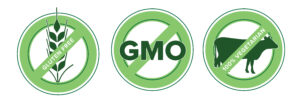
Theme 2: Health related changes
Some participants noticed very little change in their mental
and physical health and some noticed extreme changes. Many went through an initial sugar withdrawal with symptoms such as headaches, feeling sick and anxiety: 1d was so ill she was convinced she had COVID-19.
Following these withdrawal symptoms many participants noticed an improvement in different aspects of their health: 4a was less foggy; 4d had more energy; 4e was less grumpy; 3a had more energy, better concentration and not so hungry; 3b noticed her muscles ached less; 2b who suffers idiopathic inflammation, noticed her muscles ached less; 2e who was suffering myalgia and fatigue from COVID-19 noticed an improvement in these symptoms; 2b noticed her symptoms for dysmenorrhea were a lot less.
1d linked her anxiety to sugar: “I had a lot of anxiety linked to workload and different pressures but what I found coming off sugar, was when I went back to work, I realised it was the sugar. I had lots of anger issues and anxiety and a short fuse. Now I feel Zen, tranquil and calm.”
Many participants noticed weight loss to varying degrees. Some were disappointed that they had not lost more and some were astounded with the loss from just stopping sugar.
Many of the participants who completed the 28 days noticed significant taste related changes and agreed that following the research they had a better appreciation of taste.
1d said: “I can’t now tolerate fruit as it is too sweet.”
When discussing the effect of sugar on health, 1d said: “I thought I knew a lot about sugar but I didn’t. The general public really don’t know what impact it is having on our bodies and how bad it is. We need to take the same approach as we take with smoking.”
Some of the participants are still ‘added-sugar-free,’ several months later and 1d highlighted how being over-weight is becoming the norm: “I had all my bloods taken as my GP couldn’t believe my weight loss of 70 lbs (32 kg) was due to me quitting sugar. I guess the cross section of the public that GP’s see is not healthy.”

Theme 3: Behaviour change
Many participants linked health related changes to behaviour change. The complex relationship of different mental health related issues such as depression, anxiety, stress, boredom and sugar consumption were mentioned by many participants.
1d indicated: “Giving up alcohol helped me give up sugar as having
a glass of wine kicked started something in me that snowballed everything and waking in the morning feeling not great encouraged sugar consumption.”
2b also mentioned this: “Abstaining from alcohol was the key to quitting sugar. Alcohol loosens your control and inhibitions. I have been through this with eating disorders and understand the mechanism that it has on somebody.”
Being organised and planning ahead with meals was commonly discussed as a reason for success. Many of the participants researched alternative meals and many commented that undertaking the challenge during the COVID-19 pandemic when they were at home gave them an advantage that they would not have had if they were working full time. There was one exception: 2b felt it was more difficult at home as she was more inclined to think about food when she was less busy.
Support from friends, family and colleagues was commonly discussed as being essential. One of the participants from part
1 set up a closed social media support group for all who were participating in the research. 3a said: “Knowing someone in the support group could have had a worse day than me was nice.”
It became apparent that some participants were unable to complete the challenge because family or ‘friends’ offered them sugar which they accepted. In some cases, the other person was unaware and in some cases they were aware. The latter was discussed in all four groups and many participants were shocked that someone would do this.
2d said: “In the past I have encountered people who tried to tempt
me into unhealthy eating. Is it a jealousy thing? They see you doing something good and they want to derail you. Maybe they feel like they are being left behind.”
2a replied: “Maybe they have tried it before and failed and didn’t want to see you do something they failed at.”
2b considered: “It’s an exertion of dominance. They are trying to exert their dominance over you and trying to exert the fact that they are in control and exerting that over you. It’s a control thing.”

Theme 4: Oral health education strategies
In the final topic participants discussed the impact the experiment had on their patient communication and what further changes should be made.
2b had changed her language and was now discussing sugar in relation to systemic inflammation and being more holistic in her approach. 1d had allotted extra time at every appointment for a discussion on sugar. 4a would now ask her patients to undertake
a similar challenge. 4c felt that being able to use the experience of the challenge really helped and 4d felt that she is now able to be more empathetic. All participants agreed that the experience was invaluable for better patient understanding.
Going forward, 3a, who is a tutor, believed that the undergraduate programme needed to change with much more emphasis on behaviour change techniques and nutritional counselling. Similar curriculum changes were also mentioned by several other clinicians.
Many of the participants expressed that more marketing campaigns promoting the dangers of sugar and food labels that are easier to understand would benefit the general public. 2c considered that diet campaigns commonly failed to mention sugar, and 2b believed that dietitians working within the NHS were aware of the science but were being forced to offer outdated advice.
Some participants expressed that the concept of sugar being defined as a treat needed to change and 4e considered that a treat is not something that is consumed in such large amounts.

Conclusion
A large group of highly knowledgeable, experienced clinicians with skills in behaviour change struggled to stop consuming added sugar: the majority did not succeed. How therefore can we expect our patients to effect a different result?
All of the participants who undertook this research now understand why this is such a difficult problem to solve. Some of them had to become aware of an addiction they did not know they had. Some of them had to attempt this challenge to try and overcome their addiction whilst constantly being tempted with sugary treats. 4b asked, “Would we do this to an alcoholic?”
They all learned that food manufacturers do their best to hide sugar from the most careful consumer, whilst adding it to specific foods in order to keep people addicted and therefore consuming it. ‘Healthy foods’ are not necessarily healthy. For those that managed to ‘kick their habit’, many had to suffer horrible side effects for several days and needed the support of family and friends to achieve this. At the same time, they had to devote extra time for planning and develop new cooking skills as they could not rely on any packaged food being sugar free.
All of the participants expressed frustration with the current status quo with regard to the general accessibility of sugar and the accuracy of the government sponsored promotional information presented to the general public, confirming the research of the Nutritional Foundation, conflicting scientific research and comments made by the Chief Nutritionist.11, 12, 15, 16, 17
Many felt that the undergraduate curriculum is outdated and
does not leave graduates armed with the appropriate nutritional counselling and behaviour change skills. Many are planning to, or already have, undertake postgraduate courses in these topics.
As well as representing dental professionals, this group also represented the general public in that they all had different levels of mental and physical health. Each person needed to adopt the challenge differently, highlighting the complexity of successful communication with our patients, the importance of getting to know the patient, the specific potential hurdles that they as an individual need to overcome and the various support mechanisms they might need. These behavioural change complexities might explain why Cochrane identified that information was being given to patients, but the effectiveness for change was unclear.4
The experience gained from this challenge should provide the participants with additional abilities to help their patients succeed. Many are aware of the numerous potential positive short and
long term health changes. Many are still ‘added-sugar-free,’ several months later. 1d summed it up really nicely when discussing how she now allows herself an occasional ‘added-sugar-treat:’ “Sugar used to control me but now I control sugar.”
The research participants will now be more creative in their approach to behaviour change: they now know what questions to ask; are aware of the pitfalls; will be far more empathetic and realistic with their expectations; and above all, now have a good idea where they may have knowledge gaps that need filling.
Our patients would definitely benefit if every dental professional attempted the same challenge. Guiding a patient to stop consuming added-sugar is a highly complex task and should be approached like any other addiction.
The experience gained from this challenge has provided all of the research participants with more knowledge to help their patients. Many participants became healthier.
“Information is not knowledge. The only source of knowledge is experience.” Albert Einstein.
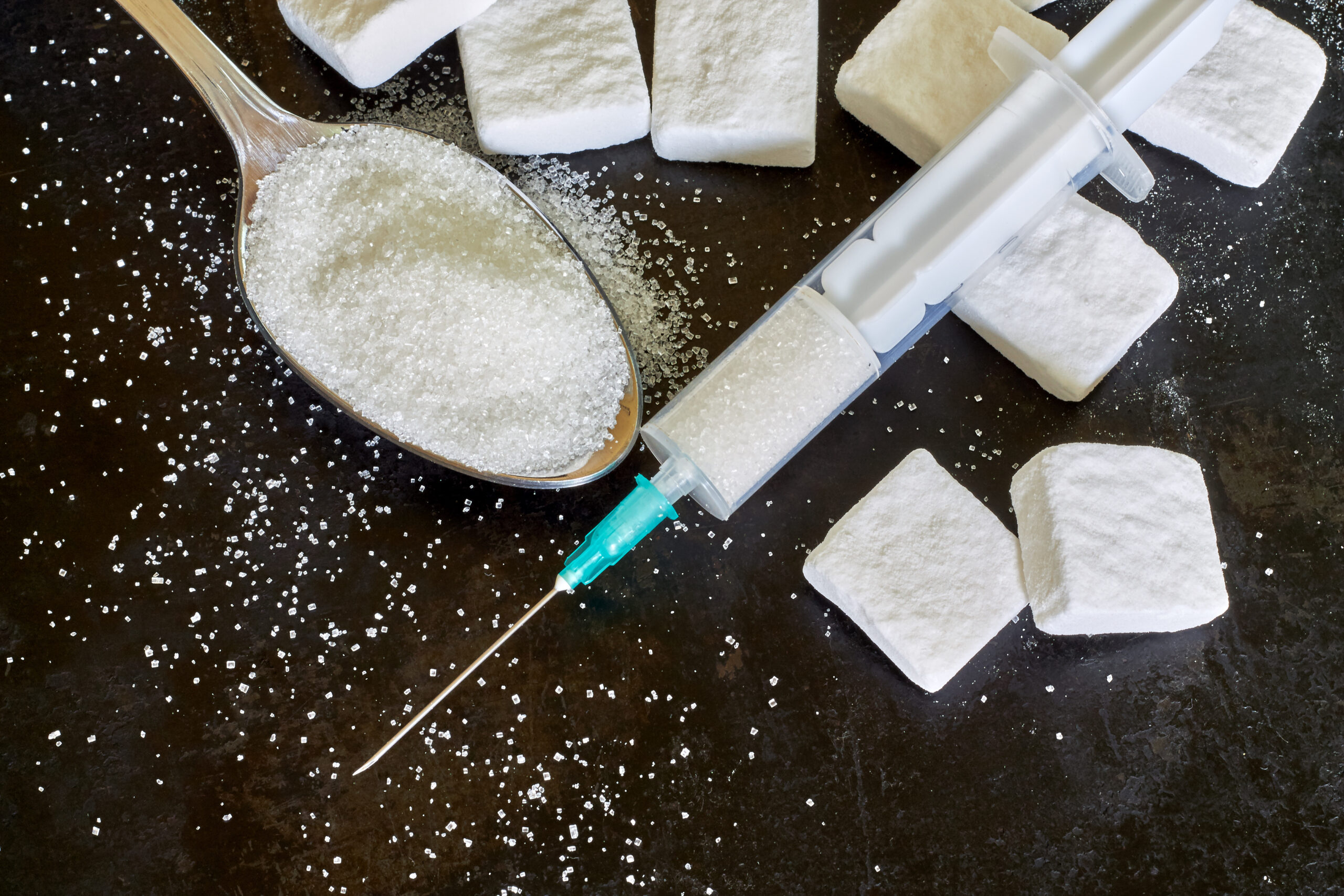
Recommendations
As a bare minimum all dental professionals should attempt this challenge. There is no justifiable reason not to do this as the new knowledge gained from this experience will benefit their approach to health behaviour change. Everyone will learn something.
We should review the undergraduate curriculum and post-graduate opportunities for behaviour change, psychology and nutritional counselling. These are the tools required to help make a patient healthy.
All dental professionals should adopt the same attitude towards sugar as they do with smoking and alcohol. We need to make it clear to all dental staff and our patients that sugar is extremely dangerous to general health.
The dental profession and representative associations need
to become aligned with the various medical professions, their associations and the government with regard to nutritional advice about sugar. There is currently no consistency or clarity of message.
As a profession we need to be one step ahead of the sugar industry, not two steps behind. We need to monitor the new names
for sugar, where sugar is being added and the various tactics
and misinformation the sugar industry currently employs. This information should be regularly disseminated to our patients.
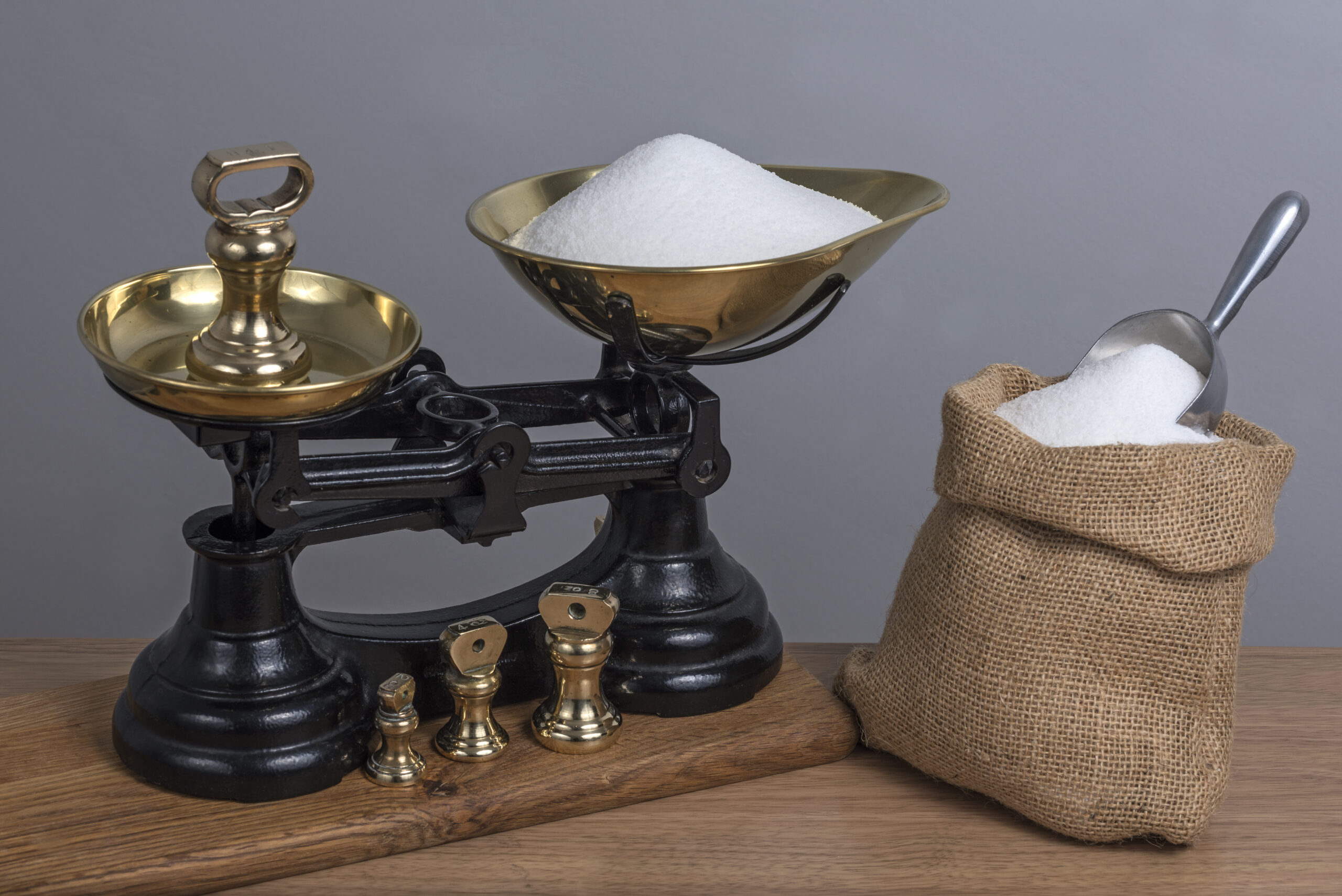
Limitations
Utilising an action research approach to this study gave the researcher the option of continuing and/or amending the approach based on initial findings. This was a relatively small research study. Similar studies to compare and contrast to this one were not found. Larger research studies involving different dental and medical professionals with a role in sugar cessation and also our patients would be required to better understand the various findings uncovered in this research.
Acknowledgements:
This research was self-funded.
I am grateful to the BSDHT for their support in this research and to O’Hehir University Ethics Committee for the research approval.
Special thanks go to all of the research participants for their support, commitment, time and passion. Additionally, all 41 dental hygienists/dental therapists participating in the research viewed the final paper which was accepted as an accurate account of
the research.
Affiliations:
Timothy Ives MA Med Ed, FHEA, BSc (Hons), RDH Co-Founder and Tutor O’Hehir University Education Committee BSDHT
Correspondence: [email protected]
References
1. Joseph L. What makes a person successful and happy being a dental hygienist? Access. 2015:29(4): 3-4.
2. Moynihan PJ, Kelly SA. Effect of caries of restricting sugars intake: systematic review to inform WHO guidelines. J. Dent Res. 2014:93(1):
8- 18.
3. Lula EC, Ribeiro CC, Hugo FN et al. Added sugars and periodontal disease in young adults: an analysis of NHANES III Data. Am J Clin Nutrit. 2014:100(4):1182-1187.
4. Harris R, Gamboa A, Dailey Y, Ashcroft A. One-to-one dietary interventions undertaken in a dental setting to change dietary behaviour. Cochrane Database of Systematic Reviews 2012. Available from https://www.cochrane.org/CD006540/ORAL_interventions-to-change-diet-in-a-dental-care-environment
5. GOV.UK. Hospital tooth extractions of 0 to 19-year olds. Available
from https://www.gov.uk/government/publications/hospital-tooth-extractions-of-0-to-19-year-olds (Accessed October 2020)
6. Diabetes UK. Diabetes Prevalence 2019. Diabetes UK. Available from https://www.diabetes.org.uk/professionals/position-statements-reports/statistics/diabetes-prevalence-2019 (Accessed October 2020)
7. Poudel P, Griffiths R, Wong VW et al. Knowledge and practices of diabetes care providers in oral health care and their potential role in oral health promotion: a scoping review. Diabet Res Clin Pract. 2017:130:266-277.
8. Hodge AM, Bassett JK, Milne RL, et al. Consumption of sugar-sweetened and artificially sweetened soft drinks and risk of obesity related cancers. Pub Health Nutrit. 2018: 21(9):1618-1626.
9. Nuffield Trust. Obesity. Available from https://www.nuffieldtrust.org.uk/resource/obesity?gclid=Cj0KCQjwk8b7BRCaARIsAARRTL51rUMO8yAU p7sRX-cLn462WiI6UjAfpPTYd3jPvZjO3gVaHGy7f3UaAlJoEALw_wcBn
(accessed October 2020)
10. GOV.UK. Soft Drinks Industry Levy comes into effect. Available from: https://www.gov.uk/government/news/soft-drinks-industry-levy-comes-into-effect
11. GOV.UK. Childhood obesity: a plan for action. Available from: https://www.gov.uk/government/publications/childhood-obesity-a-plan-for-action
12. Suvan JE, Finer N, D’Aiuto F. Periodontal complications with obesity. Periodontol 2000. 2018:78(1):98-128
13. Yudkin J. Pure, White and Deadly. London: Penguin Books; 2016.
14. Taubes G. The Case Against Sugar. London: Portobello Books, 2016.
15. GOV.UK. Reducing saturated fat lowers blood cholesterol and risk of CVD. Available from https://www.gov.uk/government/news/reducing-saturated-fat-lowers-blood-cholesterol-and-risk-of-cvd (accessed October 2020)
16. Deghan M, Mente A, Zhang X, et al. Association of fats and carbohydrate intake with cardiovascular disease and mortality in 18 countries from five continents (PURE): a prospective cohort study. The Lancet. 2017: 390(10107): 2050-2062.
17. British Nutrition Foundation. Mixed messages from health and
news sources leave UK adults confused about nutrition. Available
from https://www.nutrition.org.uk/press-office/pressreleases/1156-mixedmessages.html (accessed October 2020)
18. Kearns CE, Schmidt LA, Glantz SA. Sugar industry and coronary heart disease research. A historical analysis of internal industry documents. JAMA Intern Med. 2016:176(11):1680-1685.
19. McNiff J, Whitehead J. All You Need to Know About Action research. London: Sage Publications, 2011.
20. Brown A, Dowling P. Doing Research: reading research: a mode of interrogation for education. London: Routledge Falmer, 1998.
21. Cohen L, Morrison K, Manion L. Research Methods in Education. London: Routledge 5th ed, 2001.
Refereed paper: Accepted 26 January 2021
If you found this research interesting, please have a read of my latest project on the creation of a no-added-sugar-tribe which follows.
I would value your feedback to: [email protected]
An investigation into knowledge gained by a group of dental hygienists and dental therapists invited to join a 'no-added-sugar tribe'.

Peer reviewed and originally published in the Annual Clinical Journal of Dental Health 2022
Timothy Ives MA Med Ed, BSc (Hons), Dip Dent Hyg, FHEA.
ABSTRACT
Aims
To investigate knowledge gained by an international group of dental hygienists and dental therapists invited to join a supportive ‘no-added-sugar tribe’.
Method
This action research project is presented as a mixed methods case study involving a group of 16 dental hygienists and dental therapists from the UK, Finland, USA, Canada and New Zealand over a 3-month period. Participants recorded weight measurements and happiness scores pre- and post-research, participated in weekly online meetings, a private Facebook group and answered post-research questions via email.
Results
Ten participants (n=15; 66.6%) lost weight with an average weight loss of 4.5kg; four (n=15; 26.6%) remained the same weight; one (n=15; 6.6%) gained 1.5kg; seven (n=15; 46.6%) reported they were happier with an average increase of 20%; seven (n=15; 46.6%) reported they were as happy; one (n=15; 6.6%) reported they were 3.3% unhappier. All participants generated new knowledge.
Conclusion
Most participants believed they became healthier because they had joined a ‘no-added-sugar tribe’. They believed that providing a safe place for open, honest, and non-judgemental discussion was fundamental in this process. Dental practice community support for sugar addiction could be a positive addition for dental disease prevention.
KEY WORDS
Action research, sugar, added-sugar, dental hygienist, dental therapist, behaviour change.
Introduction
When an international group of dental hygienists and dental therapists attempted to stop consuming added-sugar for a period of 28 days the majority failed, demonstrating quite clearly that they were unable to achieve what they were asking of their patients.1 According to the participants, the biggest reason for their ‘failure’ was addiction to sugar. By participating in a private Facebook group set-up to provide support for one another, it was hoped that the clinicians in this follow up study would be more successful in their attempts to stop consuming added-sugar.
The UK National Health Service (NHS) provides help and information on its website and lists the most common addictions as: gambling; drugs; alcohol; and smoking. There is also mention of: work; internet; solvent; and shopping addictions. There is no mention of processed food addiction.2 Processed foods
and sugar are strongly linked; most of the sugar consumed is wrapped up in processed foods and drinks. An expert in processed food addiction and Fellow of the American College of Nutrition, Joan Ifland, considers that the effects of addiction to processed foods are as serious as alcohol and smoking.3
The NHS website informs (in bold) in the ‘How to cut down on sugar in your diet’ section, that: ‘We Britons really do eat too much sugar: 700g of the sweet stuff a week. That’s an average of 140 teaspoons per person.’ It mentions the most common sources of added-sugar: drinks; breakfast cereals; chocolate; biscuits; and cakes, and suggests alternative lower sugar processed alternatives. There is no mention of behaviour change or addiction.4
A systematic review of 52 studies looking at the evidence (brain reward dysfunction; preoccupation; risky use; impaired control; tolerance/withdrawal; social impairment; and relapse) for food addiction concluded that processed foods containing sugar demonstrate the greatest addictive potential.5 There is a growing movement amongst the medical community for clinicians to be more aware of processed food addiction as this type of food is widely available for all age groups, including the very young. A recent study found that, ‘highly processed foods are associated with changes in reward functioning and addictive behaviours, and this should have important implications for treatment and policy.’6 The World Health Organisation (WHO) would like a ban on added-sugar in foods for children under 36 months old and, in 2019, expressed concern that sugar laden baby foods were inappropriately marketed for babies under the age of six months.7 In the same year Dr Alison Tedstone, Public Health England’s
(PHE) chief nutritionist announced, “Some baby foods have far too much sugar in them and no one should consider this acceptable.”8

Two years later, the availability and consumption of sugar continues to increase.
In 2021, a study of baby foods discovered that 38.5% of processed baby foods contained added-sugar, noting that the products with added-sugar had a ‘less desirable nutrient profile.’ Furthermore, the use of concentrated fruit juice and purees in baby foods was widespread throughout Europe. The pureeing process breaks the fruit cell walls creating readily available free sugars, in addition to the added-sugar.9
Rates of sugar related diseases continue to increase. Fatty liver disease used to be associated with adults and was common in individuals suffering from alcoholism.
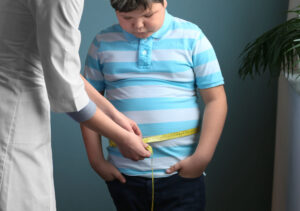
According to the American Liver Foundation it now affects 1 in 10 children and has doubled in the last 20 years. A recent systematic review and meta-analysis provided figures of 7.6% of children in general population studies and 34.2% of children in obesity clinics.10,11 In the UK, 28% of adults and 21% of children are obese and 8% of the population has diabetes.12, 13
The latest figures for children’s admissions to hospital for dental extractions under general anaesthesia are 59,000 children per year with 13,000 of these children aged 0-5 years.14

Peer support groups for the treatment of addiction have been popular for many years and the benefits show much promise. However, a relatively recent review of the evidence indicated that there is limited data relevant to this topic on which to draw definitive conclusions.15 The first ever study that looked specifically at the evaluation of the availability and content of support options, accessible online for food addiction, concluded that very few online support options include health professionals and there was a lack of evidence-based-options.16 In a broader context, small groups have been used to promote behaviour change for over 100 years. Change is facilitated through altering group members’ beliefs, perceptions, and expectations, however the theories underlying these principles are rarely used in behaviour change interventions.17 Examples of positive outcomes within small groups are for weight loss programmes18 and smoking, drinking, and diet.19 The evidence supporting
the main mechanisms of positive change are centred around promoting self-disclosure and challenging feedback.17
The power within communities to bring about a change in addictive behaviour has been explored.3 Many people live within communities where sugar and processed food are eaten daily, enforced by modern society and marketing which promoted addictive eating. By bringing people into a different supported community on a regular basis, where the aim is to avoid sugar and processed food, a positive change can be brought about.
Aim
To generate new knowledge from the study of an international group of dental hygienists and dental therapists who had been invited to join a ‘no-added-sugar tribe’.
Methods
This action research (AR) study is a form of inquiry that enables clinicians to improve their own practice whilst influencing the learning of others.20
Ethical approval was obtained from O’Hehir University Ethics Committee (02/09/2021). Informed consent was obtained frommresearch participants and confidentiality and privacy of the research participants was met throughout the process.
Invitations to join a ‘no-added-sugar tribe’ were sent via email to all the dental hygienists and dental therapists who had participated in a previous research project, where they attempted to stop consuming added-sugar for 28 days.1
Respondents were asked to join weekly online video meetings (work permitting) between 6th October 2021 and 15th December 2021 and a private Facebook group.

The role of the tribe was to provide mental and emotional support to each other with regard to the avoidance of added-sugar. For the purpose of the research, sugar was defined as anything ending in ‘ose’, or varieties thereof, that were not naturally present in foods and drinks. Based on the suggestions of Julia Champe and Deborah Rubel, when discussing the facilitation of psycho-educational groups,21 tribal rules were agreed: be kind to oneself; kind to each other; and do not judge.
Each meeting was recorded using Zoom software on an iMac. For security, the recordings were stored in a cloud using Dropbox, to which only the researcher and participants had access.
Prior to the first meeting, all participants were asked to make a note of their weight and complete The Oxford Happiness Questionnaire.22 This is considered a reliable and valid method of determining happiness.23,24 Both the weight measurement and happiness score would be repeated at the end of the research and in addition the following questions were answered:
• Why did you offer to participate in the research?
• What have you learnt about sugar and sugar addiction?
• Please describe how this tribe affected you and your behaviour personally?
• Please describe how this tribe affected your behaviour professionally?
Quantitative results
A total of 16 research participants from five countries – UK, Finland, USA, Canada and New Zealand – agreed to join the tribe and take part in the study. All participants contributed and answered the questions and 15 returned their data.
Weight
Ten (n=15; 66.6%) participants lost weight. Their average (mean) weight loss was 4.5kg.
Four (n=15; 26.6%) remained the same weight.
One (n=15; 6.6%) gained weight. The weight gain was 1.5kg.
Happiness
Seven (n=15; 46.6%) participants reported they were happier. Their average (mean) increase was 20%.
Seven (n=15; 46.6%) reported they were as happy.
One (n=15; 6.6%) reported they were unhappier. The decrease in happiness was 3.3%.
Weekly Zoom meetings
These consisted of each participant presenting their current ‘sugar status’ to the tribe along with a non-judgemental, open discussion about various related topics which included: addiction; sugar and health; behaviour change; hidden sugars; sugar and politics; sugar and alcohol; natural and artificial sweeteners; and patient education.
Private Facebook Group
This was used to: highlight hidden sugars; share recipes; raise an awareness of current marketing techniques for sugar related products and companies; and determine subjects to discuss during the weekly Zoom meetings.
Qualitative results
Why did you participate in this research?
Many enjoyed participating in the previous study1 and considered it might be beneficial to have the support of others. Many also were inquisitive and regarded it as a learning opportunity, curious to experience how the tribe would operate. All tribal members considered it an opportunity to become healthier and some had health related issues that they believed would benefit from doing this.
What have you learnt about sugar and sugar addiction?
Sugar is not a food and is highly addictive. The more that is consumed, the more the brain craves it and this increases appetite. When sugar consumption decreases, taste improves and the taste nuances in different non ‘sugary’ foods improve. Also, hunger decreases and less food is consumed.
All agreed that they had become more knowledgeable and became increasingly angry by the staggering amounts of sugar that are added to the food chain, often hidden, and not clearly documented; many of these foods are marketed as healthy options.
The sugar industry is extremely powerful. It is very difficult to avoid the marketing techniques employed by large, processed food companies. Healthy options are usually more expensive.
Please describe how this tribe affected you and your behaviour personally?
Tribal members became kinder to themselves and each other if they had a ‘set-back’. They felt that as ‘set-backs’ were normalised and not judged, success was easier. They benefited from peer support and considered belonging to a tribe a powerful, motivational and enlightening experience. They felt the sharing of knowledge was empowering and this, along with being in a positive ‘team’, helped with motivation to succeed. Most lost weight and many became happier and considered this was due to reducing or quitting added sugar. Many were able to think more clearly and described themselves as having less ‘brain fog’ when not consuming sugar.
Please describe how this tribe affected your behaviour professionally?
An understanding of what it takes to reduce or quit added sugar aided them in becoming more aware of their patients’ individual complexities. This led them to change and adapt their approach to oral health education from one of education and motivation to one of listening and trying to understand. Some initiated separate patient appointments for diet and lifestyle. Some found their increased knowledge gained from other tribal members helped with patient education. Many used their tribal membership and their sugar addiction as an opportunity to open the discussion with their patients about sugar reduction and cessation.
Analysis and discussion
Addiction

All tribal members were aware of the addictive properties of sugar from their participation in a previous study.1 This experiment reinforced that knowledge and current beliefs of nutritional experts3 and processed food addiction psychology research.4,5 Despite the non-recognition of sugar addiction within the NHS,2 many of the participants believe they are now addicted for life and have been for many years. Subsequently, they now understand the need to be constantly vigilant, as it is so easy to slip into regular sugar consumption and increasingly higher amounts.
During the Zoom meetings, there was a belief from participants that the volume and regularity of their sugar consumption was related to a chemical release process in the brain, related to their emotional behaviour and/or a reward for something. This belief confirms the evidence from psychology research.4,5 In addition, neuroscience research confirms food addiction is related to neurochemicals, as opioids and dopamine are released following sugar consumption, which can lead to dependency.25,26 There is also neuroscientific evidence for the effect of sugar on clarity of thought and the creation of ‘brain fog’. A diet high in sugar effects the regulation of neurotrophins. A reduction in brain-derived neurotrophic factor negatively affects memory and learning ability.27 Given the alarming increase in sugar within baby foods7 to what extent will this negatively affect the brain development and learning potential in babies who are consuming this type of ‘food’?
What is added-sugar?
Defining ‘added-sugar’ was a constant topic for discussion amongst this group of dental professionals. There was a ‘grey area’ about the pureeing and blending of fruit and vegetables when natural sugars are released. While they are not ‘added-sugars’ in the strictest of definitions, they are just as harmful. Food manufacturers have taken advantage of this loophole and advertise ‘food-like products’ as ‘high in fruit’, which actually describes fructose - the most dangerous sugar. If dental professionals are confused with terminology, then where does this leave the public?
Artificial and natural low-calorie sweeteners were discussed at length.
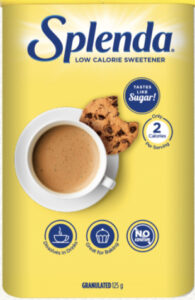
The participants enjoyed using xylitol and erythritol as an alternative to sugar but believed their artificial counterparts to be as unhealthy as sugar. Despite being cleared as safe by various government food safety authorities, there is evidence that when heated, some release carcinogens28 and some are potentially harmful to kidneys.29 Artificial sweeteners are now abundant within processed food and drinks. Participants reported there is much confusion amongst their patients over their safety and differences between natural and artificial sugar alternatives.
International collaboration
All participants agreed that they had benefited from the international mix of clinicians within the tribe, and it was interesting to see how the availability and consumption of sugar differs between countries. The dental hygienists in Finland were very surprised to learn how hidden the sugar was in UK, USA, Canada and New Zealand, compared to their own country.

Community
Many participants believed that they would not have been so successful had they not been a member of the tribe. The regular facilitated group interaction empowered them to be more mindful when making decisions. It was obvious from group discussions when participants ‘opened up’ about issues that they fully trusted one another. As registered healthcare professionals with a sound understanding of confidentiality, this was to be expected. When a supported group of individuals exhibits social learning from those with whom they can identify and respect, they are more likely to adopt positive behaviour changes.30
It was commonly stated that participants were put under constant pressure from family, friends and even colleagues to consume added sugar. This was evident in previous research in which they had participated.1 Prior to being in the tribe, they believed that they would have been more likely to relent and consume sugar. They discussed how being in the tribe gave them a different thought process when confronted with temptation – ‘my tribe doesn’t eat sugar’. Social comparison theory proposes individuals continually reflect on their decisions based on comparisons with others. This is far more powerful when the comparison is with people within a valued group to which they belong.31
Joan Ifland discusses the power of abiding by community rules within ancient tribes, where being removed from the tribe could be life threatening, and how this ancient behaviour and belief system is engrained in humans and can be more powerful than addictive behaviour.3 This resonated with the participants who also indicated that they felt the support of the tribe when they went shopping. It was agreed that this helped them to make healthier decisions - ‘my tribe doesn’t eat that type of food’.
This positive behaviour change can also be explained by social comparison theory31 and social identification, where categorising oneself as a group member can help re-prioritise goals.32
Interestingly, all participants were aware that the study, in the formal sense, would have to end. Research of supported social groups has found that when group members value their membership to the group, cohesion forms, which is critical to learning but also keeps them wanting to be a group member.33 All tribal members have stated that they want to continue, in some form, with regular tribal meetings.

Conclusion
What do we need to do to make a difference? Sugar is the cause of caries34, at the very least it has a role to play in periodontal diseases35 and is directly implicated in our nation’s type II diabetes and obesity ‘epidemic’. In addition, it affects our learning ability, prevents clarity of thought and our decision-making process. The volume of sugar we are now feeding our babies and our children is increasing.
A large proportion of the participants believed they became healthier because they joined a ‘no-added-sugar tribe’. They believed that providing a safe place for open, honest, and non-judgemental discussion was fundamental in this process. Could practice-led supported groups for patients with a sugar and processed food addiction be the future of dental disease prevention?
Many of the participants in this study are now dedicating more time in their clinical practice to this topic. This is also reflected by Cochrane in a systematic review, which identified that the information in general practice regarding sugar is being given to patients. The review also concluded the effectiveness for change was unclear.36 The participants in this study fully understand why Cochrane would reach this conclusion. Behaviour change, especially regarding sugar addiction, is highly complex and requires far more than the passing of knowledge and providing information. This research also indicates that assisting with added-sugar cessation is far more complex than practising motivational interviewing and other behaviour change techniques. The issue should be addressed similarly to any other addiction and providing community based mental and emotional support are key ingredients to success.
Application to practice
All those with a role to play in advising patients in dietary health should attempt to stop consuming added-sugar. The knowledge gained from this experience will benefit their own approach to health behaviour change.
As a profession we all need more training and support regarding the diagnosis, assessment and recovery of sugar and processed food addiction.

At the same time, we need to engender a change in mindset within clinical practice amongst all staff regarding sugar. We should make it clear to our staff and our patients that sugar is extremely dangerous to health and then open a dialogue about sugar addiction. We need clear unambiguous up-to-date information regarding everything related to sugar to be available to the dental team and the public.
Given the success of this supported group, we should investigate the possibility of creating and developing practice supported groups for patients needing guidance regarding sugar addiction and cessation. At the same time, further research within this area will help guide best practice for the development and structure of supported groups. This research poses many questions relating to the makeup of future groups and how they are facilitated. The participants within this group were all healthcare professionals, facilitated by a healthcare professional. We now need to involve our patients in future research.
Limitations
This was a relatively small and intimate study. Similar studies to this were not found. Larger research studies involving different dental and medical professionals and patients would be required to better understand the various findings uncovered in this research.
Acknowledgements
This research was self-funded.
I am grateful to the BSDHT for their support in this research and to the O’Hehir University Ethics Committee for the research approval.
Special thanks go to all research participants for their time, support, commitment, and passion.
Conflict of Interests
The author is unaware of any conflict of interest.
Affiliations
Timothy Ives, Co-Founder and Tutor O’Hehir University.
Education Committee BSDHT.
Correspondence [email protected]
References
1. Ives T. An investigation into what dental hygienists and dental therapists would discover if they attempted to stop consuming added-sugar for 28 days. Ann Clin J Dent Health. 2021;10:11-15.
2. NHS. Addiction: what is it? Available from: https://www.nhs.uk/live-well/healthy-body/addiction-what-is-it/ (Accessed January 2022).
3. Ifland J. Processed Food Addiction: Foundations, Assessment and Recovery. CRC Press: New York (2020).
4. NHS. How to cut down on sugar in your diet. Available from: https://www.nhs.uk/live-well/eat-well/how-to-cut-down-on-sugar-in-your-diet/ (Accessed January 2022).
5. Gordon EL, Ariel-Donges AH, Bauman V, Merlo LJ. What is the evidence for ‘food addiction?’ A systematic review. Nutrients. 2018;10(4):477.
6. Schiestl ET, Rios JM, Parnarouskis L et al. A narrative review of highly processed food addiction across the lifespan. Prog Neuro-Psychopharma Biol Psych. 2021;106:110152.
7. World Health Organisation. WHO/Europe studies find baby foods are high in sugar and inappropriately marketed for babies. Available from: https://www.euro.who.int/en/media-centre/sections/press-releases/2019/whoeurope-studies-find-baby-foods-are-high-in-sugar-and-inappropriately-marketed-for-babies (Accessed January 2022).
8. GOV.UK. Baby food industry needs better products and clearer food labelling. Available from: https://www.gov.uk/government/news/baby-food-industry-needs-better-products-and-clearer-labelling
(Accessed January 2022).
9. Grammatikaki E, Wollgast J, Caldeira S. High levels of concern in baby foods available in Europe that contain sugar-contributing ingredients or are ultra-processed. Nutrients. 2021;13(9):3105.
10. Children’s Health. Fatty liver disease in children is on the rise. Available from: https://www.childrens.com/health-wellness/fatty-liver-disease-in-children-on-the-rise (Accessed January 2022).
11. Anderson EL, Howe LD, Jones HE et al. The prevalence of non-alcoholic fatty liver disease in children and adolescents: a systematic review and meta-analysis. PLOS ONE. 2015;10(10): e0140908.
12. Nuffield Trust. Obesity. Available from: https://www.nuffieldtrust.org. uk/resource/obesity (Accessed January 2022).
13. Diabetes UK. Diabetes statistics. Available from: https://www.diabetes. org.uk/professionals/position-statements-reports/statistics (Accessed January 2022).
14. GOV.UK. Hospital tooth extractions of 0 to 19-year-olds. Available from: https://www.gov.uk/government/publications/hospital-tooth-extractions-of-0-to-19-year-olds (Accessed January 2022).
15. Tracy K, Wallace SP. Benefits of peer support groups in the treatment of addiction. Subst Abuse Rehab. 2016;7:143-154.
16. McKenna RA, Rollo ME, Skinner JA, Burrows TL. Food addiction support: website content analysis. JMIR Cardio. 2018;2(1):e8718.
17. Borek AJ, Abraham C. How do small groups promote behaviour change? An integrative conceptual review of explanatory mechanisms. Appl Psychol Health Well. 2018;10(1):30-61.
18. McMahon NE, Visram S, Connell LA. Mechanisms of change of a novel weight loss programme provided by a third sector organisation: a qualitative interview study. BMC Pub Health. 2016;16:378 Available from: https://bmcpublichealth.biomedcentral.com/articles/10.1186/s12889-016-3063-4 (Accessed February 2022)
19. Sani F, Madhok V, Norbury M et al. Greater number of group identifications is associated with healthier behaviour: evidence from a Scottish community sample. Brit J Health Psychol. 2012;20(3):466-481.
20. McNiff J, Whitehead J. All you need to know about action research. London: Sage Publications; Routledge Flamer (1998).
21. Champe J, Rubel D. Application of focal conflict theory to psychoeducational groups: implications for process, content, and leadership. J Special Group Work. 2012;37(1):71-90.
22. Hills P, Argyle M. The Oxford Happiness Questionnaire: a compact scale for the measurement of psychological well-being. Person Indiv Diff. 2002;33(7):1073-1082.
23. Robbins M, Francis LJ, Edwards B. Happiness as stable extraversion: internal consistency reliability ad construct validity of the oxford happiness questionnaire among graduate students. Curr Psychol. 2010;29(2):89-94.
24. Hadinezhad H, Zaree F. Reliability, validity and normalization of the Oxford Happiness Questionnaire. Psychol Res. 2009;12(1-2):62-77.
25. Avena NM, Rada P, Hoebel BG. Evidence for sugar addiction: behavioural and neurochemical effects of intermittent, excessive sugar intake. Neurosci Biobehav Rev. 2008;32(1):20-39.
26. Rada P, Avena NM, Hoebel. Daily bingeing on sugar repeatedly releases dopamine in the accumbens shell. Neurosci. 2005;134(3):737-744.
27. Molteni R, Branard RJ, Ying Z et al. A high-fat, refined sugar diet reduces hippocampal brain-derived neurotrophic factor, neuronal plasticity, and learning. Neorosci. 2002; 112(4):803-814.
28. Eisenreich A, Gürtler R, Schäfer B. Heating of food containing sucralose might result in the generation of potentially toxic chlorinated compounds. Food Chem. 2020. 321. Available
from: https://www.sciencedirect.com/science/article/abs/pii/S0308814620305628 (Accessed January 2022).
29. Ardalan MR, Tabibi H, Attari VE, Mahdavi AM. Nephrotoxic
effect of aspartame as an artificial sweetener. Iran J Kidney Dis. 2017;11(5):339-343.
30. Luszczynska A, Schwarzer R. Social cognitive theory. In M. Conner
& P. Norman (Eds.). Predicting health behaviour. Maidenhead: Open University Press (2005).
31. Festinger, L. A theory of social comparison process. Hum Relat. 1954;7(2):117-140.
32. Turner J. Social categorisation and the self-concept: a social cognitive theory of group behaviour. In E.J. Lawler (Ed), Advances in group process: theory and research. Greenwich, CT: JAI Press (1985).
33. Lieberman M, Yalom I, Miles M. Encounter Groups: First Facts. New York: Basic Books (1973).
34. Moynihan PJ, Kelly SAM. Effect of caries of restricting sugar intake: systematic review to inform WHO guidelines. J. Dent Res. 2014:93(1);8-18.
35. Lula EC, Ribeiro CC, Hugo FN et al. Added sugars and periodontal disease in young adults: an analysis of NHANES III data. Am J Clin Nutr. 2014:100(4);1182-1187.
36. Harris R, Gamboa A, Dailey Y, Ashcroft A. One-to-one dietary interventions undertaken in a dental setting to change dietary behaviour. Coch Data Syst Rev. 2012. Available from: https://www. cochranelibrary.com/cdsr/doi/10.1002/14651858.CD006540.pub2/full. (Accessed January 2022).
Peer reviewed paper: Accepted 23 January 2022
I would value your feedback to: [email protected]